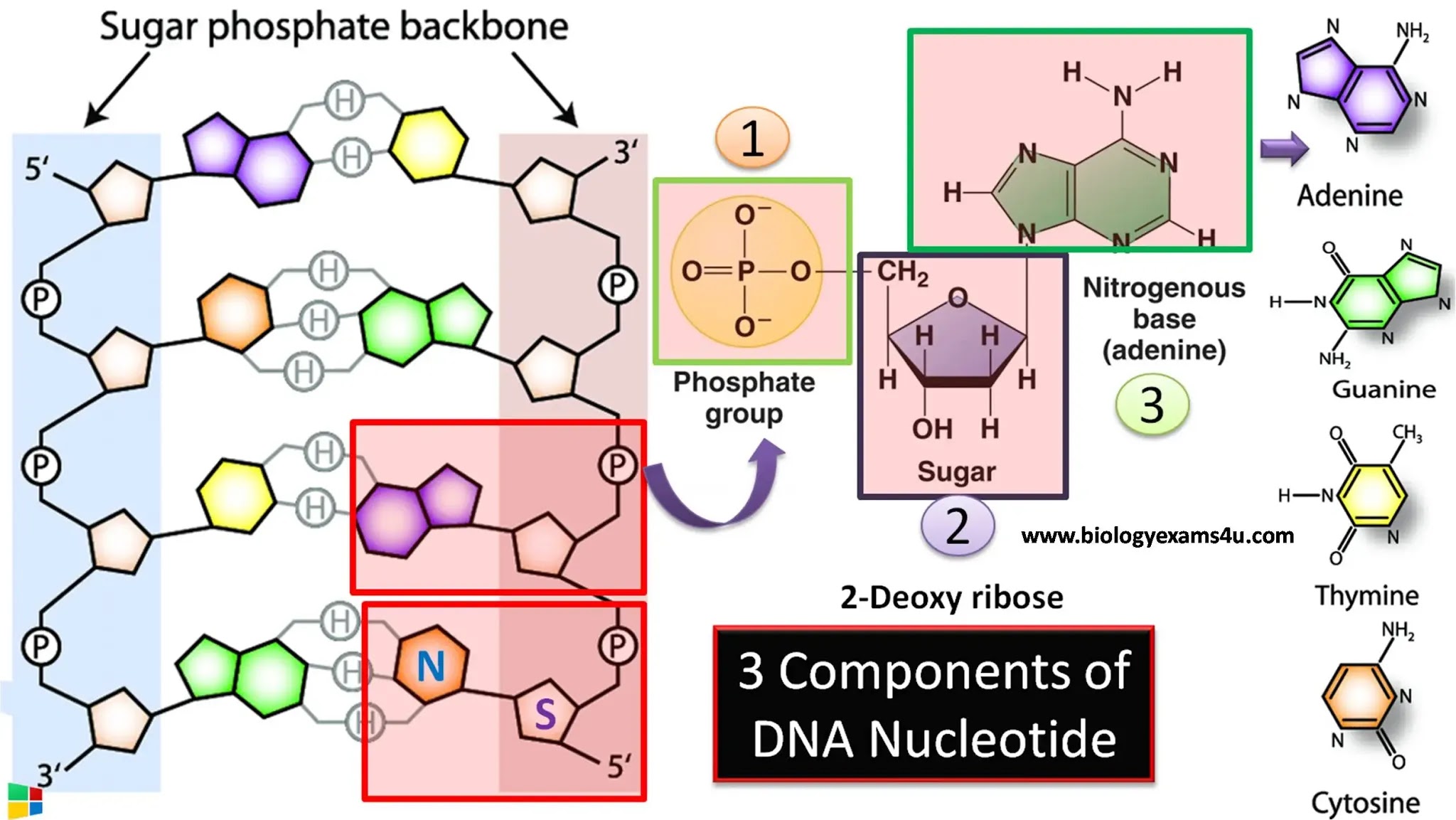Disclosing The Types Of Chemical Bonds Essential For DNA Stability
DNA, the molecule of life, is held together by various types of bonds. These bonds determine the structure and function of DNA, making it essential for life as we know it.
DNA is a double helix composed of two strands of nucleotides. Each nucleotide consists of a nitrogenous base, a deoxyribose sugar, and a phosphate group. The nitrogenous bases are adenine (A), thymine (T), cytosine (C), and guanine (G). These bases pair up with each other through hydrogen bonds, forming the rungs of the DNA ladder. The deoxyribose sugars and phosphate groups form the backbone of the DNA molecule.
The hydrogen bonds between the nitrogenous bases are relatively weak, but they are numerous enough to hold the two strands of DNA together. The strength of these bonds is critical for DNA replication and transcription, the processes by which cells make copies of DNA and RNA, respectively. If the hydrogen bonds were too strong, DNA would not be able to unwind and replicate; if they were too weak, the DNA strands would fall apart.
In addition to hydrogen bonds, DNA is also stabilized by covalent bonds between the deoxyribose sugars and the phosphate groups. These covalent bonds form the backbone of the DNA molecule and are much stronger than hydrogen bonds. The covalent bonds give DNA its strength and stability, allowing it to withstand the rigors of the cellular environment.
The types of bonds that hold DNA together are essential for the structure and function of DNA. These bonds allow DNA to store and transmit genetic information, making them essential for life as we know it.
what types of bonds hold dna together
Hydrogen Bonds
The weak hydrogen bonds between nitrogenous bases hold the two strands of DNA together, forming the rungs of the DNA ladder. These bonds allow DNA to unwind and replicate during cell division.Covalent Bonds
The strong covalent bonds between the deoxyribose sugars and the phosphate groups form the backbone of the DNA molecule, giving it strength and stability. These bonds prevent the DNA strands from falling apart.FAQs on "what types of bonds hold dna together"
This section provides answers to frequently asked questions on "what types of bonds hold dna together".
Question 1: What are the different types of bonds that hold DNA together?
Answer: DNA is held together by two types of bonds: hydrogen bonds and covalent bonds. Hydrogen bonds form between the nitrogenous bases, while covalent bonds form between the deoxyribose sugars and the phosphate groups.
Question 2: Why are the different types of bonds important for DNA?
Answer: The different types of bonds play crucial roles in maintaining the structure and function of DNA. Hydrogen bonds allow DNA to unwind and replicate during cell division, while covalent bonds provide strength and stability to the DNA molecule.
Summary: Understanding the types of bonds that hold DNA together is essential for comprehending the structure and function of DNA. These bonds are vital for DNA replication, transcription, and the storage and transmission of genetic information.
Conclusion on "what types of bonds hold dna together"
In conclusion, the types of bonds that hold DNA together play a crucial role in maintaining the structure and function of DNA. Hydrogen bonds between nitrogenous bases allow DNA to unwind and replicate, while covalent bonds between deoxyribose sugars and phosphate groups provide strength and stability to the DNA molecule. Understanding these bonds is essential for comprehending the fundamental processes of DNA replication, transcription, and the storage and transmission of genetic information.
The study of DNA bonds has far-reaching implications for various fields, including genetics, medicine, and biotechnology. By understanding the intricate interactions between these bonds, scientists can develop new therapies for genetic diseases, design targeted drug delivery systems, and engineer DNA-based technologies for a wide range of applications.
Unveiling The Transformation: Meet The New Lindsay Actress In 'Arrested Development'
Uncover The Ultimate Bitcoin Mixer For Enhanced Privacy In 2024
Who Played Lindsay Bluth? Your Questions Answered

